[ page 13 ]
General Dynamics F-16 in 1/72 scale : kit review & modelling reports of HASEGAWA kits
.. continued from
page 12...
..

 [22]
[22] I was decided to make a very early F-16A Block 15 of the Danish Air Force, a long member of NATO. From 1980 to 1983 some 58 F-16's from various early Blocks were delivered to the "Flyvevabnet". I had a very old MODELDECAL set #74 with decals for a few early Danish F-16's. The early Block aircraft were delivered with the small horizontal stabilizers and these were not replaced for many years. I had a pair of spare small stabilizers from an old kit. The rest is rather a straight forward built.
As with many other older Hasegawa kits, again the intake is rather undeep so the rear section of part #B4 was cut off with a razor saw to get a deepened look.

The cockpit is small but the throtlle and control stick are there.
As with all Hasegawa kits the wing halves installment needs care to ensure a correct dihedral. The main model parts were now joined. Some putty and filler is needed. Also, the rear engine section needs quite some sanding to get flush surfaces.
Also ensure correct alignment of the landing gear; when the bulkhead part #B6 is only just a-symmetric set in place, it will give a wrong horizontal attitude. When you find out later, trim one of the holes in this part to correct it.
The standard ventral fins #C17 and #C18 below the fuselage need a bit white glue to close the tiny gaps.
A coat of base grey was airbrushed to look for any imperfections that can be seen more easily. (the smaller parts thus not yet fitted).
Stores and weaponry carried are often the standard underwing 370 tanks and early generation AIM-9 Sidewinders. The vertical tail has the standard USAF type layout without parachute pack.Next followed the standard early NATO F-16 Federal Standard colours:
- on lower surfaces FS36375 (airbrushing Gunze Sangyo H308 acrylic),
- FS36270 (using Gunze Sangyo H306) on nose section and also upper surfaces on the intake fairing as well as vertical tail.
- On the remaining upper areas FS36118 (using Gunze Sangyo H305) with the airbrush.
NOTE: I have been advised later on by Erik of the Royal Danish Air Force that the actual colours are not standard, but:
FS36373, FS36270 and 36132 (or a bit glossier 26273, 26270, 26132)
Gears/undercarriage parts and bays are gloss white.
The next step was to apply the decals. Decals from Modeldecal set #74 were used for F-16A Block 15 coded "E-599" of Danish Air Force Esk.723 operated in 1984 (serial 80-3599). It had still the small stabilizers fitted and was delivered a year earlier.
These decals are very old and prone to "silvering", that spoils appearance as air may get trapped below decals. So a gloss varnish coat (using Johnson Future/Pledge) was airbrushed to help here to avoid "silvering". The Danish AF roundels were retrieved from an ESCI F-16B #9028 kit.
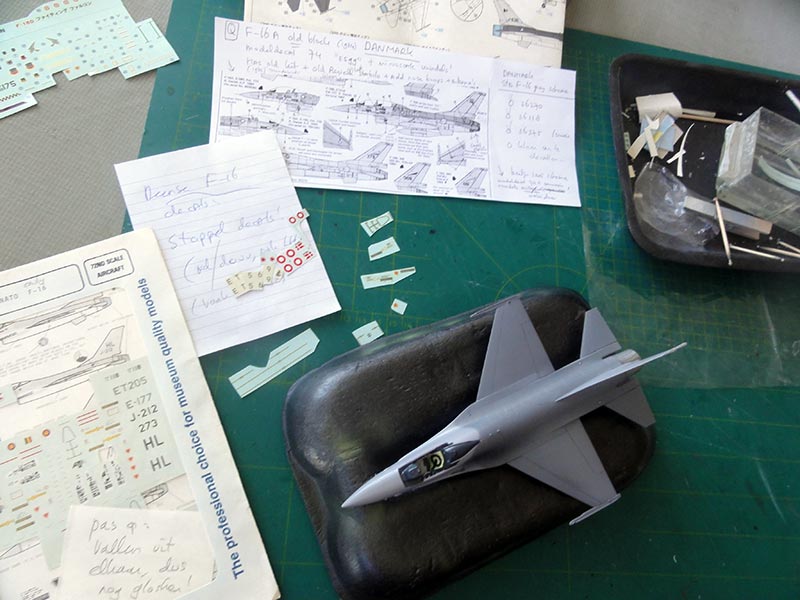

Note
that light grey/brown walkways lines were set in place. The early
small stabilizers are also seen (without the trailing edge extension
applied on later Blocks).
After decalling, completing the model was done. The nose landing gear is one piece with an integrally moulded nose wheel. For the rest, assembly is straight forward such as the main gear with white bays and gear legs. Inside the main gear bay I added the missing battery pack and some hydraulic lines from thin metal wire. Some painting and wash may applied as well.
In the medium grey painted cockpit tub the instrument consoles were painted with black instruments. The early style HUD was set in place and a red cover added. The kit seat #B8 is rather simple; I added harnesses and the 2 small sensors at the sides of the head rest for the ACES II seat.
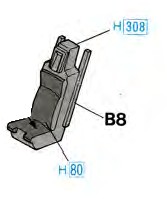
Particular for the Danish F-16A single seaters was the "spotlight" fitted on the left nose side aft of the radar radome. This was made from a aluminium foil disk punched with a Waldron Puch and Die set. It was glued in place.
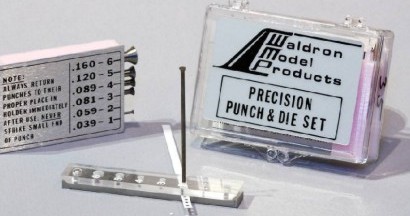
The nose pitot was replaced by one made from a needle. At the right side a second pitot (missing in the kit) was added as fitted aft of the radar nose from scrap. A few red warning "remove before flight" vanes were added made from glossy paper.
The overall model got a semi-gloss varnish coat airbrushed on Johnson Clear/Pledge with 10% added Tamiya Flat Base X21 mixed in and one drop of Glycerine to improve flowing.
Inside the canopy I added the missing pair of handles seen inside all F-16 canopies and finally the canopy set in place.
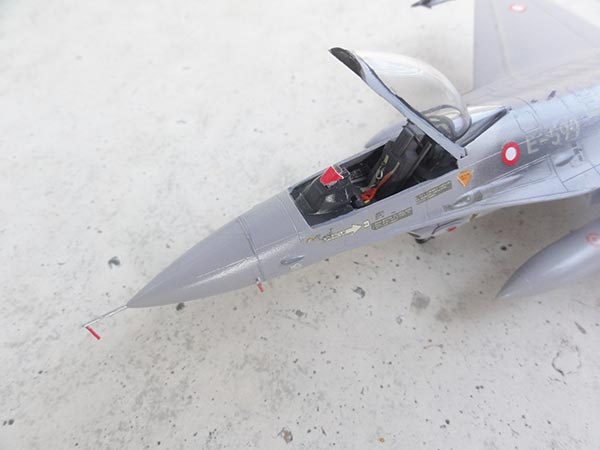
![]()
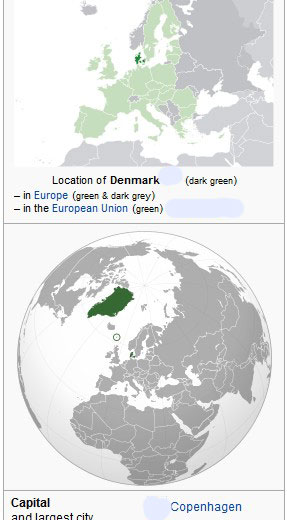
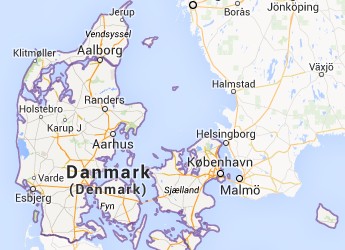


[ 42,933 sq.km (excl. Greenland) | capitol: Copenhagen | population 5,7 million | income USD 55,000 per capita ]
Military aviation in Denmark began with a Farman tried out end 1911. Military flying was for the air, the army and navy. Various biplanes were flown including Farmans, Friedrichshaven and Hansa Brandenburgs. An army flying school started in 1912 and other types in the 1920s were Avro 504, Hawker Dankok and various Fokkers like the C.I, S.III and some 42 C.V. In 1938 some 14 Fokker D.XXI (D-21) aircraft were also delivered. April 9, 1940 Germany invaded Denmark as well as many other countries and Danmark could give little resistance. Many of the D-21 were captured by the Luftwaffe and along with other aircraft used by the Luftwaffe.
After the Second World War were the country was occupied Denmark obtained Spitfires, joined NATO in 1949. It was the Cold War. Other aircraft were the observation aircraft from the local manufacturer Kramme Zeuthen with some 10 KZ.VII operated from 1948 until 1977! Meanwhile the Navy had acquired Gloster Meteor jets and the "Flyvevabnet" became an independent air force from October 1950 obtaining through the MDAP F-84 Thunderjets and T-33 trainers as well as Hawker Hunters and F-84 Thunderstreaks and RF-84 Thunderflashes. Transports were DC-3, Pembrokes, PBY-5, later the C-54 and a few S-55 helicopters. In the 1960s F-104 Starfighters came as well as F-100 Super Sabres. As the F-100 was soon obsolete, in 1970 Saab Drakens (called F-35) were acquired with some 20 F-35 fighters, 20 RF-35 and 3 TF-35 trainers.
From 1980 some 77 General Dynamics F-16A/B aircraft came to replace the F-104. The first batch from 1980 had 5 aircraft of Block 1, 15 Block 5, 18 Block 10 and 20 Block 15. The second batch from 1987 had 22 Block 15 and later on a few replacement aircraft followed. All F-16 were license manufactured in Europe by SABCA and Fokker. The Danish F-16A's had a spotlight fitted in the left nose side, many had some special pylons with chaff dispensers and could carry the Red Baron reconnaissance pod. They can also fire Maverick missiles. Later on some 60 F-16's were upgraded to MLU standard in a joint NATO program. 2014 saw a first F-16 deployment to Greenland. All remaining F-16 MLU's are still flying today awaiting some 27 Lockheed F-35 JSF delivery.
Current types are still F-16 MLU, three CL-604 Challenger transport, four C-130J Hercules transport, 28 T-17 Supporter and helicopters like from the 1980s the Lynx, EH-101, MH-60, twelve AS550 Fennec.
End 2021 some 43 F-16 MLU6 were still operational and to be replaced by some 27 F-35A. Beginning 2022 F-35 training is up to full speed with first 4 F-35A at Luke AFB in the USA.
The most important air bases are at Skrydstrup (F-16), Karup, Roskilde/Kobenhavn and Alborg. Also in Greenland at Nuuk and Thorshavn at the Faroe islands a few airstrips are available.


 F-16A
coded "E-599" of Danish Air Force Esk.723 operated in 1984 (serial
803599);
F-16A
coded "E-599" of Danish Air Force Esk.723 operated in 1984 (serial
803599); it was still seen flying in 2017, now for Esk. 727.
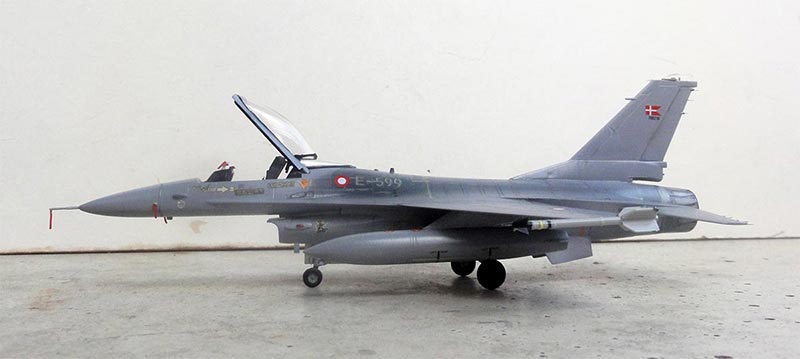
Note also the "spotlight" at the nose.

page 2
page 3
page 4
page 5
page 6
page 7
page 8
page 9
page 10
page 11
page 12
page 13
page 14
page ....
....
..
Kit Hasegawa Special Edition #02095 has the JSF Test Support markings.
 [23]
[23] 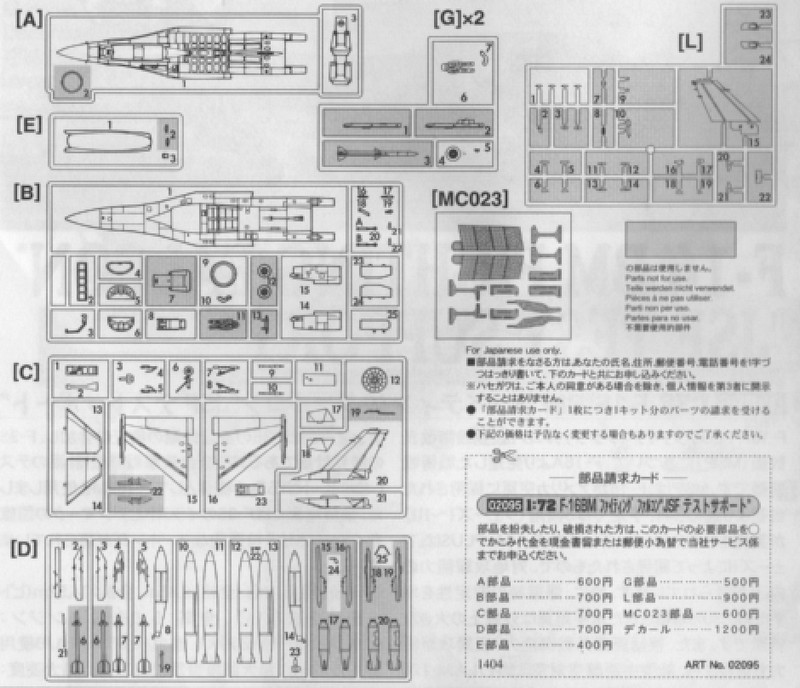
The kit has still the appropriate initial small air intake and Pratt and Whitney F100 engine with exhaust part #B9.
Although this release of 2014 has many parts common as kit #0814 for a F-16B "Plus" but with other decals additional parts are included: a set of MLU stiffener plates of thin etched metal on sticky foil and additional parts (in sprue L) from which in fact only the IFF antennas are used. Sprue G gives the main wheels #G4 and the relocated landing lights #G5, now inside the nose wheel door.
NOTE: no later style LAU-129 wing tip missile launch rails are provided although this is a MLU aircraft. I assumed that these were not needed for this model. The standard older launchers integrally moulded with the wing halves were thus retained.
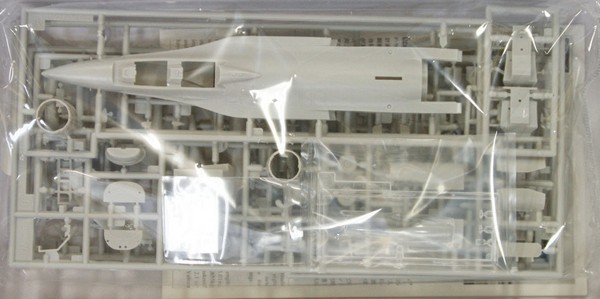

The decals are fine with also walkway lines. (on the decal sheet some other decals are found but no other colour scheme is indicated; I suspect this was originally intended to give a second option...).
![]()
The stiffener plates (an anti-fatique structural strength measure often seen on MLU F-16's), were added as supplied in this Hasegawa kit. Very well done Hasegawa for supplying these! Note the stiffener layout / configuration may vary between aircraft. (on other later "C" Blocks for example).
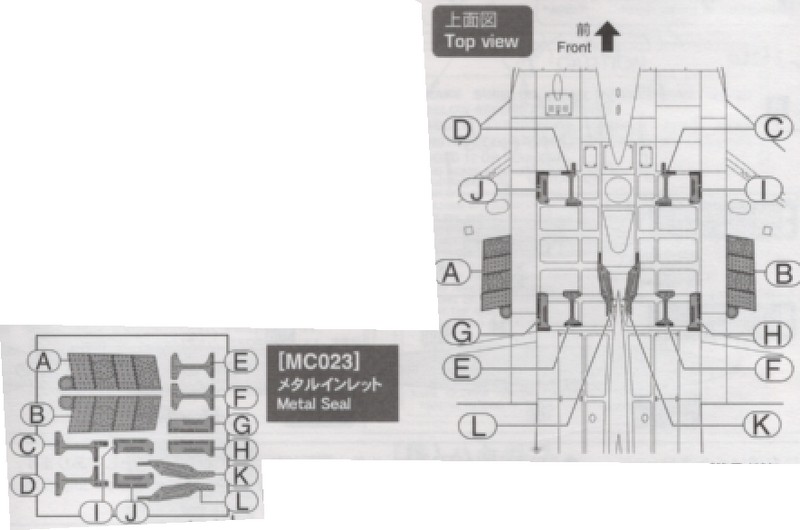
When the stiffeners were set oin the model spine and inboard wing, the model got a base coat of grey (airbrushing Revell aqua 75 "steingrau"). Any flaws were corrected.
The vertical tail was not yet installed to make airbrushing easier. The small leading edge probe on it was also removed as Hasegawa indicates in STEP 6.
Next came the camouflage scheme:
Standard NATO colours are seen with a coloured tail. I airbrushed acrylics:
On lower surfaces Federal standard FS36375 (airbrushing Gunze Sangyo H308 acrylic), FS36270 (using Gunze Sangyo H306) on nose section and on the remaining upper areas FS36118 (using Gunze Sangyo H305) with the airbrush.
NOTE: I have been advised later on by Erik of the Royal Danish Air Force that the actual colours are not standard, but:
FS36373, FS36270 and 36132 (or a bit glossier 26273, 26270, 26132)
The radar nose got a coat of H337, so darker grey than the instructions' suggested H307.

Gears/undercarriage parts and bays are again gloss white. A bit of plastic was added to suggest the battery pack and hydraulics from thin metal wire.
After a few gloss varnish (Johnson Future/ Pledge) airbrushed coats, the decals were next.
For the coloured tail, you get a choice on how to apply the vertical tail markings: 2 pair of large decals or separate items to be set on painted coloured tail.....

I airbrushed the tail with the lower section Revell aqua 330 "Feuerrot" Red and the upper tail area Revell aqua 56 "blau". This will look better. Note that the photo on the box shows the upper area not to be nearly black as on the large decals 1+14 but more very deep dark blue with a darker edge on top. This was done by mixing in a bit black in the paint aqua 56.
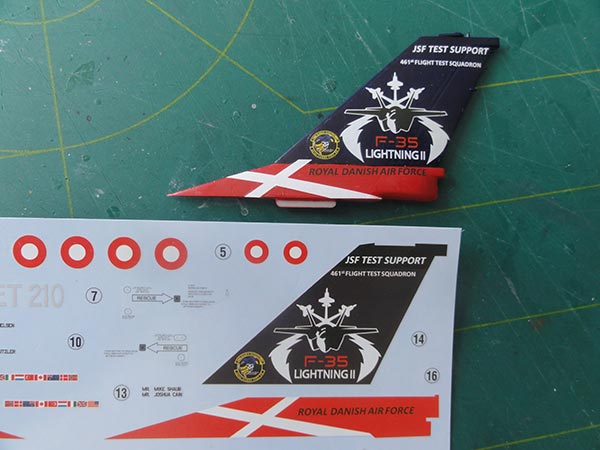
The other decals including the very light grey walkway lines were as per kit.
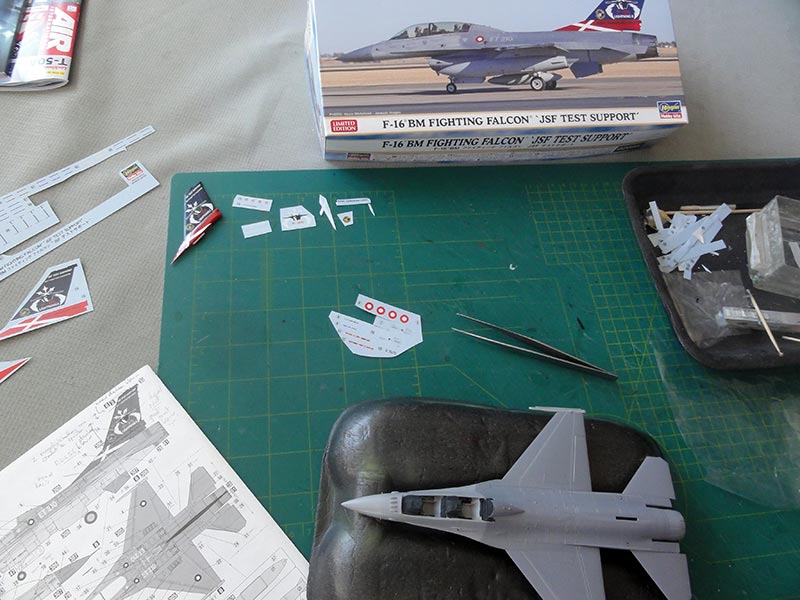
The gears and details were added as described above. The two seat cockpit got also some more detailed ACES II seats, with the head rest sensors and some scrap details.

Some wash was added inside gear bays, on undercarriage legs, on exhaust. The pitot tube and side pitot #D24 were added as well as 15 static dischargers.
A semi gloss varnish was airbrushed to get and even sheen and protect the decals similarly as described above.
Inside the two seat canopy 2x2 handles were added as well from stretched sprue. Canopy actuator was made from a metal needle that I think look better (so not using part #D21) and large canopy installed.
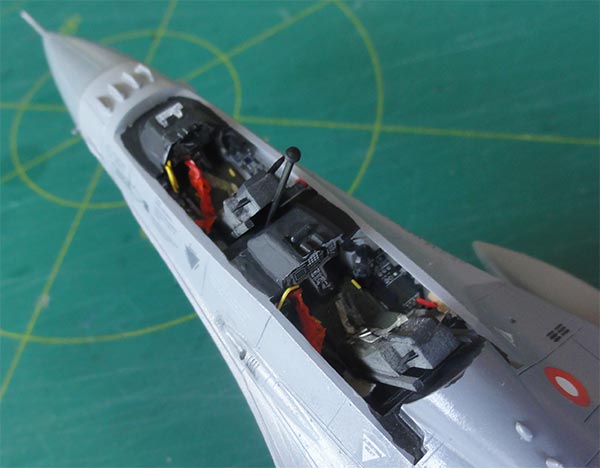
No weaponry was fitted on this JSF test support aircraft. The standard stores are in the kit with their pylons. But the box top shows a different central (travel?) pod. This pod was made using fuel tank spare parts without fins from an Academy A-37 "tweety" kit that looked similar. The 370 gallons wing tanks and pylons were used as per kit.
The 23th completed kit in the 1/72 F-16 series.

 F-16BM [Block 20 MLU]
F-16BM [Block 20 MLU]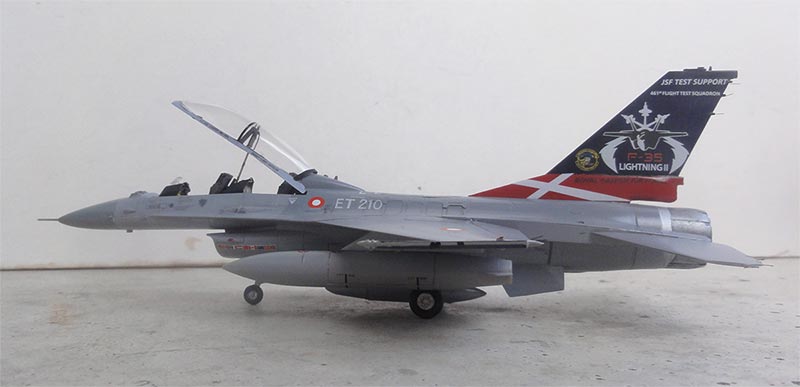
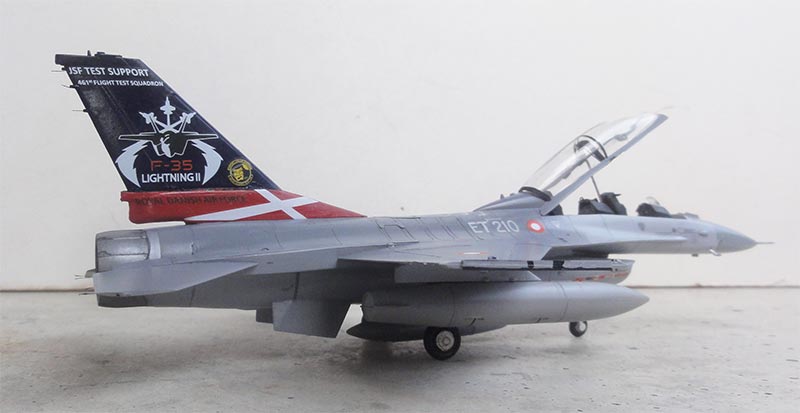
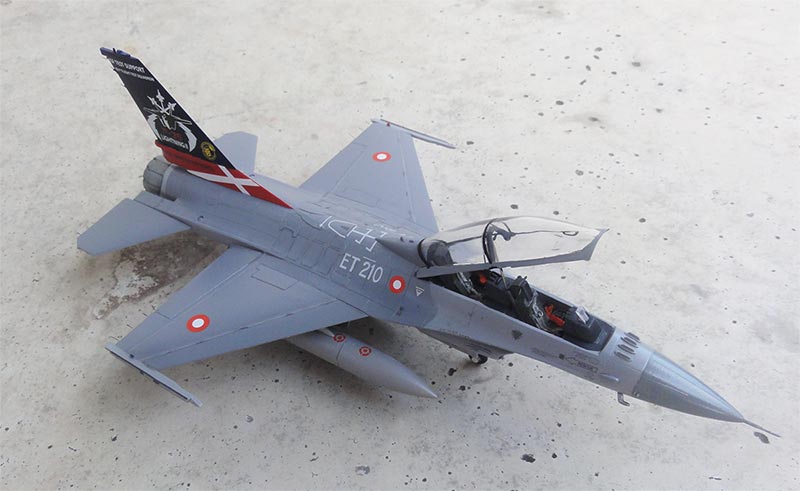
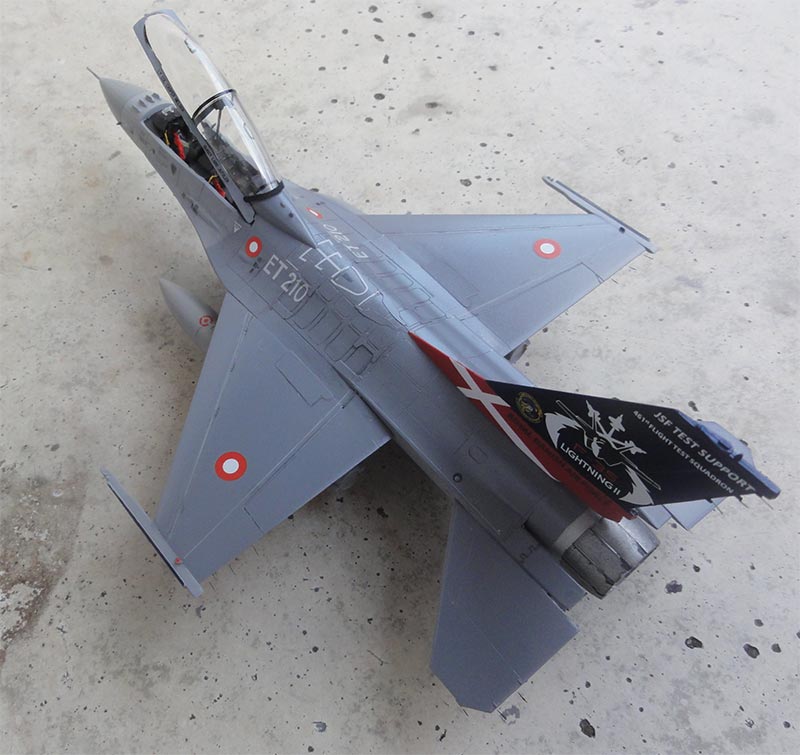
F-16BM [Block 20 MLU upgraded], serial on delivery 78-0210, 6G-7, "ET 210" of Danish AF 461 FTS for JSF TEST SUPPORT. Also seen in 2017 operated by Esk. 730 in Denmark.
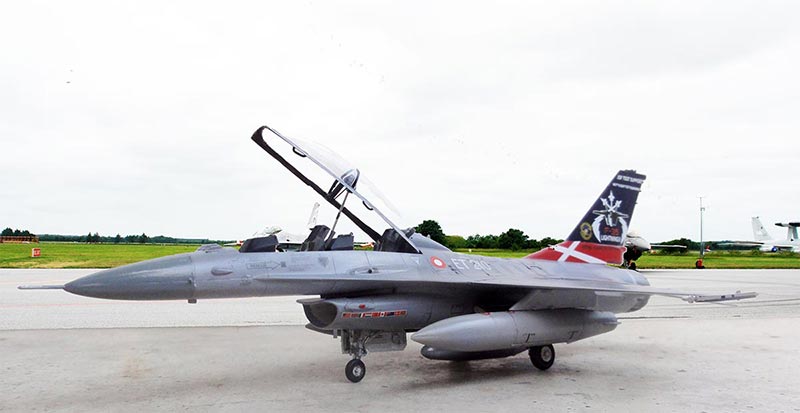
On to next F-16 [ page 14 ... ]
..

(c) Copyright "designer"/ All rights reserved. Your comments are welcomed by webmaster
Created this page
Sept 19, 2018